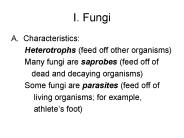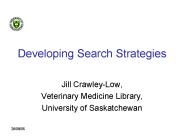Mycorrhiza PowerPoint PPT Presentations
All Time
Recommended
Understanding mycorrhizae powder is key to better gardening. These beneficial fungi form symbiotic relationships with plant roots, enhancing nutrient and water uptake. This results in healthier, stronger plants with improved growth and resilience. Mycorrhiza fungi also promote soil health by improving soil structure and microbial activity. Incorporating mycorrhiza fungi into your gardening practices can lead to more successful and sustainable gardening.
| PowerPoint PPT presentation | free to download
... linking Northern Spotted Owl to Old Growth Forests to their flying squirrel prey ... the other three in the system fail: owl, squirrel, mycorrhizae, tree ...
| PowerPoint PPT presentation | free to view
Unlock the potential of mycorrhizae fungi as natural allies in promoting plant health and ecological balance. Discover innovative techniques for harnessing their symbiotic prowess to improve soil fertility, restore degraded habitats, and mitigate the impacts of climate change. Join the journey towards a greener, more resilient future powered by the wonders of mycorrhizae fungi.
| PowerPoint PPT presentation | free to download
Witness the power of Mycorrhizal Powder in elevating farm sustainability. By facilitating plant-fungi collaboration, this groundbreaking solution enhances soil health and nutrient uptake. Reduce environmental impact while achieving impressive crop yields. Mycorrhizal Powder's influence extends beyond the field, demonstrating how a small addition can lead to remarkable improvements in soil structure, water efficiency, and long-term agricultural viability.
| PowerPoint PPT presentation | free to download
What are Mycorrhizal Fungi? Mark Howieson Product Development Specialist Becker Underwood, Inc. Discussion Points Introduction to mycorrhizae Reasons to inoculate ...
| PowerPoint PPT presentation | free to view
What are Mycorrhizal Fungi? Mark Howieson Product Development Specialist Becker Underwood, Inc. Discussion Points Introduction to mycorrhizae Reasons to inoculate ...
| PowerPoint PPT presentation | free to view
Mohammad Reza Amerian April 2000 Introduction Mycorrhizae are mutualistic associations or symbiosis between soil fungi and plant roots that colonise the cortical ...
| PowerPoint PPT presentation | free to view
HortResearch, Havelock North. WILD. untamed. fierce. rowdy. outrageous. uncultivated ... morphologically simple but genetically highly diverse ...
| PowerPoint PPT presentation | free to view
Arbuscular Mycorrhizal Fungi (AMF) help your plant to grow under stressful or complex conditions. It forms a symbiotic connection with the plant at its vascular level and expands the roots of the plants so it can absorb all the nutrients, water, and minerals from afar. This way, the plants can derive all the vital minerals and nutrients, even from a distance, that are necessary for their development.
| PowerPoint PPT presentation | free to download
The mycelium of mycorrhizal fungi essentially extend the roots system of their associated plants to help the plants easily draw in nutrients, minerals, and water from afar. Mycorrhizal fungi form symbiotic relationships with plants at the root level. These fungi enshroud and, in some case, penetrate the structure of plant roots to form an intimate connection that facilitates a 2-way nutrient exchange. In return, the mycorrhizal plant provides the fungus with photosynthesized sugars.
| PowerPoint PPT presentation | free to download
The Role of Mycorrhiza in Plant Nutrition and Plant Growth
| PowerPoint PPT presentation | free to view
Found on both gymnosperm trees (conifers) and angiosperm trees 2,000 species of trees ... 380 families including ferns, fern-allies, gymnosperms, and angiosperms ...
| PowerPoint PPT presentation | free to view
AM plants: Juniper. Creosote Bush. Grasses. Fertilization: Grasslands (1997, Allen and Allen) ... Survival- example. Juniper productivity. Junipers, N and Bears ...
| PowerPoint PPT presentation | free to view
Trichoderma 6 fungal species that include Trichoderma (6 strains), Gliocladium virens (2 strains), Trichoderma harzianum (2 strains), Trichoderma viride ...
| PowerPoint PPT presentation | free to view
presentatiom
| PowerPoint PPT presentation | free to download
Title: Mycorrhizae Restoration To Inoculate or not to inoculate: That is the Question. Author: Student Last modified by: Dawn White Created Date
| PowerPoint PPT presentation | free to view
loose net over the growing (distinctive) hair roots ... Achlorophyllous orchids. highly fungus specific ... scab or head blight in barley, wheat, oats, and rye ...
| PowerPoint PPT presentation | free to download
SymRK defines a common genetic basis for plant root endosymbioses with arbuscular mycorrhiza fungi, rhizobia, and Frankia bacteria Last modified by:
| PowerPoint PPT presentation | free to view
b. over- or under-watering. c. chemical injuries. d. nutrition ... ii. Good nursery schedules (especially watering) - don't let beds get too wet ...
| PowerPoint PPT presentation | free to view
... (lignin!), also form mycorrhiza Most vascular plants are associated with mycorrhizae. Photo: ectomycorrhizal fungi (Hebeloma and Lactarius species) ...
| PowerPoint PPT presentation | free to view
... (lignin!), also form mycorrhiza Most vascular plants are associated with mycorrhizae. Photo: ectomycorrhizal fungi (Hebeloma and Lactarius species) ...
| PowerPoint PPT presentation | free to view
INTRODUCTION Root fungus association is called Mycorrhiza. There are two types of Mycorrhizal fungal association viz. Ectomycorrhiza and Endomycorrhiza (AM).
| PowerPoint PPT presentation | free to download
Brown algae Macrocystis and Laminaria - California. Giant. Sequoia. Root with mycorrhizae. Guttation ...
| PowerPoint PPT presentation | free to view
Today: Our First Presentations! Macroevolution Diversity! Onto Prokaryotes Meeting the Protists Overview of Fungi? The Major Fungi Groups The Zygomycetes Mycorrhizae ...
| PowerPoint PPT presentation | free to view
A relationship between Fungus + Root = Mycorrhiza. Construction of Haustaria Biotrophic fungi frequently produce haustaria. Haustoria: ...
| PowerPoint PPT presentation | free to view
rhizoid. stolon. basidium. saprobe. lichen. mycorrhiza. Definition ... Rhizoid: rootlike hyphae that penetrate surface of bread. ...
| PowerPoint PPT presentation | free to view
... Bioremediation Increasing surface area for ... Applied Microbiology and ... can be saprophytic and also mycorrhizal (Stamets, 2005) (Virginia Bioinformatics ...
| PowerPoint PPT presentation | free to download
Roots, through mycorrhizae and root hairs, absorb water and minerals ... of rock, living organisms, and humus (residue of partially decayed organic material) ...
| PowerPoint PPT presentation | free to download
Sac Fungi (Ascomycetes): Include organisms such as yeast and truffles. I. Fungi E. Value of Fungi Decompsers in nature Mycorrhizae: Fungi and Plant grow ...
| PowerPoint PPT presentation | free to download
Ribulose bisphosphate (RuBP, Rubisco) most abundant protein on ... Common in grasses, herbs, and tropical trees. A.k.a vesicular arbuscular mycorrhizae (VAM) ...
| PowerPoint PPT presentation | free to download
mycorrhiza (fungus-root): relationship between plant roots ... III. Root nodules: legumes and rhizobium. N2. IV. Lichens. crustose. foliose. fruticose. The end ...
| PowerPoint PPT presentation | free to view
Zygomycetes are partners in most ancient type of mycorrhizae. ... Black knot of cherry is caused by an Ascomycete fungus. Morels are ascomycete fungi ...
| PowerPoint PPT presentation | free to view
Apical meristem and root caps. Epidermis. Root hairs. Rhizosphere. Mycorrhiza. Cortex. storage ... Endodermis & Casparian Strips. endodermis ('stele' ...
| PowerPoint PPT presentation | free to view
Decomposition. Fungal parasites. Fungi - nematode predators. Mycorrhizae. Lichens ... Yeast for brewing and baking (Saccharomyces cerevisiae) Medicinals (e.g. ...
| PowerPoint PPT presentation | free to view
P, Zn, Cu, water, N for plant. Different types ... 5000 species interact with 2000 plant species ... Mycorrhiza gets carbon from plant ...
| PowerPoint PPT presentation | free to view
orchid endomycorrhiza. 1. Vesicular arbuscular mycorrhiza (AM) ... 5. Plants spend a lot of energy on N acquisition - growing ...
| PowerPoint PPT presentation | free to view
( Possible additions - root interactions in mixtures, AMF (mycorrhiza) ... Develop methods to preserve mycorrhiza. Wednesday, 30 June DISCUSSION ...
| PowerPoint PPT presentation | free to view
Example: Mycorrhiza. Tree Roots. Give: Water Absorption, Make minerals available. Get : 'Food' from Tree ... that can develop into new organism. Spores Cont. ...
| PowerPoint PPT presentation | free to view
Hyphae- threadlike filaments which make up fungi. Mycellium-a mass of hyphae. Septa- cross partitions or walls in fungal ... Fruticose. Foliose. Mycorrhizae ...
| PowerPoint PPT presentation | free to view
... & Society Shoot Growth in Eastern White Pine Arboriculture How a Tree Grows-Terms Radical Taproot Lateral root 1o 2o Mycorrhiza(s) [e] ...
| PowerPoint PPT presentation | free to view
Water and sugar transport & PLANt hormones OSMOSIS Which way would the water molecules (red dots) be moving? Roots SEM of Marjoram Root Mycorrhizae (fungi ...
| PowerPoint PPT presentation | free to view
Biochar. Mycorrhizae spores. EM (Effective microbes) What is the significance of the formulation as it relates to soil health? What is soil health?
| PowerPoint PPT presentation | free to view
Plant Root Endosymbioses An investigation of the genetic overlap between arbuscular mycorrhiza and root nodule symbioses The story of two intracellular symbioses ...
| PowerPoint PPT presentation | free to download
RHIZANOVA Tree Transplant Tree Injectable Pt Injectable Flower and Palm Rx Benefits of Mycorrhizae Root absorptive area increased greater area for nutrient uptake ...
| PowerPoint PPT presentation | free to view
mycorrhizae provide plants with mineral nutrients. high quality detritus faster regeneration ... enzymes, H to decompose detritus, and access minerals that ...
| PowerPoint PPT presentation | free to view
Hydraulic Lift (see pg 84, text) The dilemma: plant has no. way of ... mass flow, diffusion, contact, hydraulic lift. 2) Hire mycorrhizae to use as roots ...
| PowerPoint PPT presentation | free to view
Mycorrhizae in Hydrothermally-Altered Soils of Yellowstone National Park ... Yellowstone's hydrothermal sites are located on a 6,500 km2 volcanic region that ...
| PowerPoint PPT presentation | free to view
Only with high level of Mycorrhiza colonization ... Competition between the pathogenic and non-pathogenic strains did not limit establishment ...
Indogulf BioAg is the dedicated bio-technology division set up under the Indogulf Group. We are pioneers in the development of biological Inoculant, organic fertilizers, and mycorrhiza (VAM). Our research & manufacturing facility is located in Salem, a small town in South India that is known for its rich underground water that promotes an extensive microbial population, making it an ideal hub for microbial bioscience.
The organic content in the root enhancers improves the structure of the soil delicately. Mycorrhizal Fungi works as a fantastic growth enhancer as it increases the ability of the soil to hold essential nutrients for a long. It goes deep into the roots, thereby ensuring quality soil health for healthy and dense produce. One should buy only high-quality organic fertilizers for the plants, like the one by Indogulfbioag.
Organic fertilizers are naturally produced substances that contain carbon. These substances are used in the facilitation of sustainable growth and provide nutrition to plants or soil. The ingredients of organic fertilizers include mostly all types of animal excreta, minerals, dead plants, etc. Even treated sewage dirt can qualify as its ingredient. Manure, compost, rock phosphate, chicken litter, bone meal, and vermi compost are few types of organic fertilizers.
| PowerPoint PPT presentation | free to download
Lichens. 2. Mycorrhizae. Section 21-3. Section Outline. Go to ... Lichen Structure. Video 1. Click the image to play the video segment. Video. Fungi. Internet ...
The Root zone layer as specified by the USGA specification its attributes and short comings. A Proposal to improve this with particular reference to Bent grass.
| PowerPoint PPT presentation | free to view
Microbiology Abstracts: Algology, Mycology & Protozoology references in ... http://www.csa.com/factsheets/microbiology-c-set-c.php ...
| PowerPoint PPT presentation | free to download
Phosphorous Uptake. P is found in organic & inorganic forms. Up to 80% of P is unavailable ... Hyphae penetrate cortical cells, but no arbuscle formed ...
| PowerPoint PPT presentation | free to view
























































